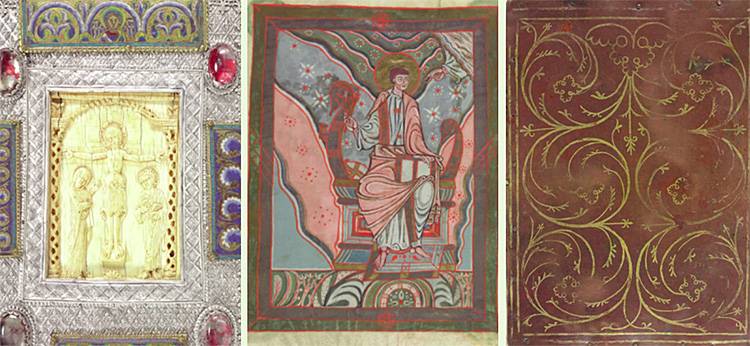
This manuscript, in possession of the British Library, was produced in Metz, a city in France’s northeastern region, in the first half of the 11th century.
In the Middle Ages, manuscripts necessary for mass formed part of the church’s most important treasures, together with other liturgical objects and relics. The value attached to the biblical texts is reflected in the luxurious decoration of this type of book, both inside and out.
Each Gospel begins with a portrait of the relevant Evangelist, and these and other pages in the book are elaborately decorated or enhanced with gold, silver or purple. Precious materials of various origins and dates were assembled to create an equally impressive treasure-binding. The back cover features an ivory carving of the Crucifixion, made in Constantinople in the 11th century.
In the Middle Ages, manuscripts necessary for mass formed part of the church’s most important treasures, together with other liturgical objects and relics. The value attached to the biblical texts is reflected in the luxurious decoration of this type of book, both inside and out.
Each Gospel begins with a portrait of the relevant Evangelist, and these and other pages in the book are elaborately decorated or enhanced with gold, silver or purple. Precious materials of various origins and dates were assembled to create an equally impressive treasure-binding. The back cover features an ivory carving of the Crucifixion, made in Constantinople in the 11th century.

